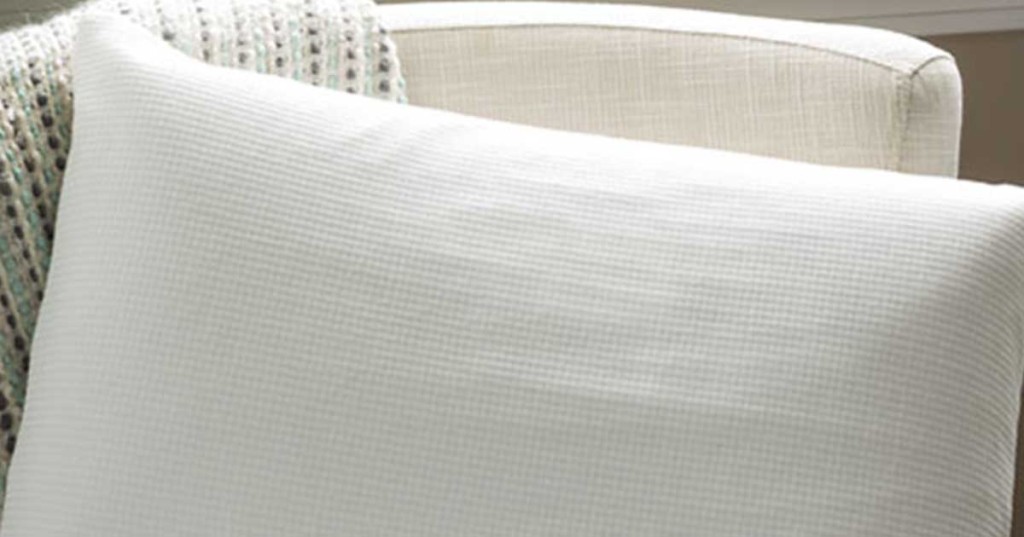Pillows are an individual choice, but I have tried to distinguish the individual characteristics of each type, so you can make more of an informed choice.
Hypodown Pillows
If you have feather allergies but are a fan of down as a fill for pillows, with Hypodown Pillows you can have your cake and eat it too. The infusion of a modest amount of Syriaca into the down causes it to become completely allergy free and the manufacturer guarantees it.
We did a blind test in the office between the Hypodown 600, Hypodown 700 and Hypodown 800-fill pillows. Everyone got it right; there is a noticeable difference between them. The 800 fill is the most lofty and of course the most expensive. If you need to economize, do it on the covering of the pillow but not the inside. After all, you put a pillow case onto the pillow, so it is the fill which you will be noticing, not its cover.
Latex Pillows
The most popular is “medium” but the pillow crunchers will like the “soft”. Latex is naturally hypoallergenic and wicks away moisture very quickly, so it is inhospitable to dust mites. Besides being reasonable in price and lasting for 10 years, we no longer have to use dust mite encasings on our pillows, which is an added bonus.
Alpaca Pillows
Down Alternative Pillows
Primaloft Pillows
Royal Pedic Head and Neck Support Natural Latex Pillows
Royal Pedic latex pillows are wonderful especially if you need to align your back and neck. They are best for side and back sleepers but not for those who like to sleep on their stomachs. We were surprised that they were not larger in size, and they are not for those who wriggle around in the night, because you manually need to readjust the pillow when you move, as the latex is rigid in form and also quite firm. Also they are not for people who like myself who want to mash a soft pillow into a ball beneath them. However, some people swear by them especially if they have neck problems.

